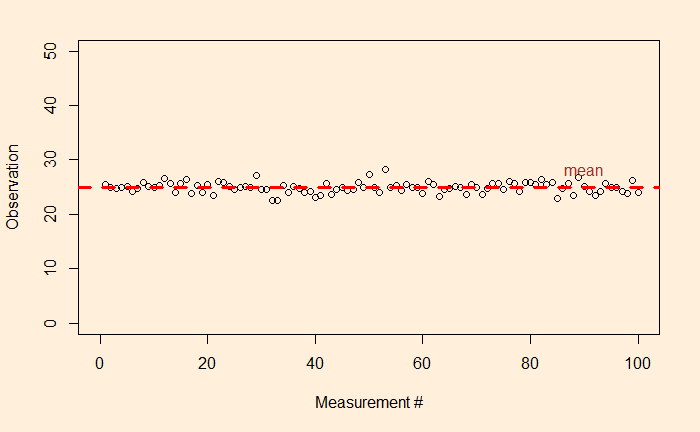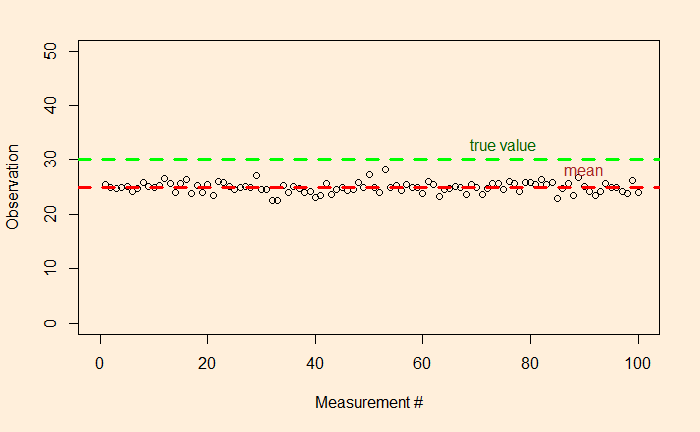We have seen what precision is – it says something about the quality of the measurements. And we saw the following as an example of high-precision data collection: the fluctuations are closer to the average.

Accuracy
But what about if the true value – unfortunately, something the measurer would never know – of the unknown was 30 instead of 25?

So there is a clear offset between the mean and the true value. In other words, the accuracy of the measurements is low. If precision is related to the presence of random errors, accuracy is compromised by systematic bias. This may have been caused by mistakes in the instrumental settings or by poor methodology.
The other potential reason for poor accuracy is the presence of outliers.
By the way, both systematic bias and outliers are deterministic errors.

